
Roots
The strands that crown us hold more than mere protein and pigment; they are vessels of heritage, echoes of ancestry, and vibrant declarations of self. To understand how cultural perceptions shape the modern care of textured hair, we must first descend to its very origins, examining the physical architecture that sets it apart and the language we employ to speak of its diverse forms. This foundational exploration invites us into a deeper reverence for the hair that grows in coils, curls, and waves, moving beyond superficial aesthetics to grasp its inherent complexity and resilience.
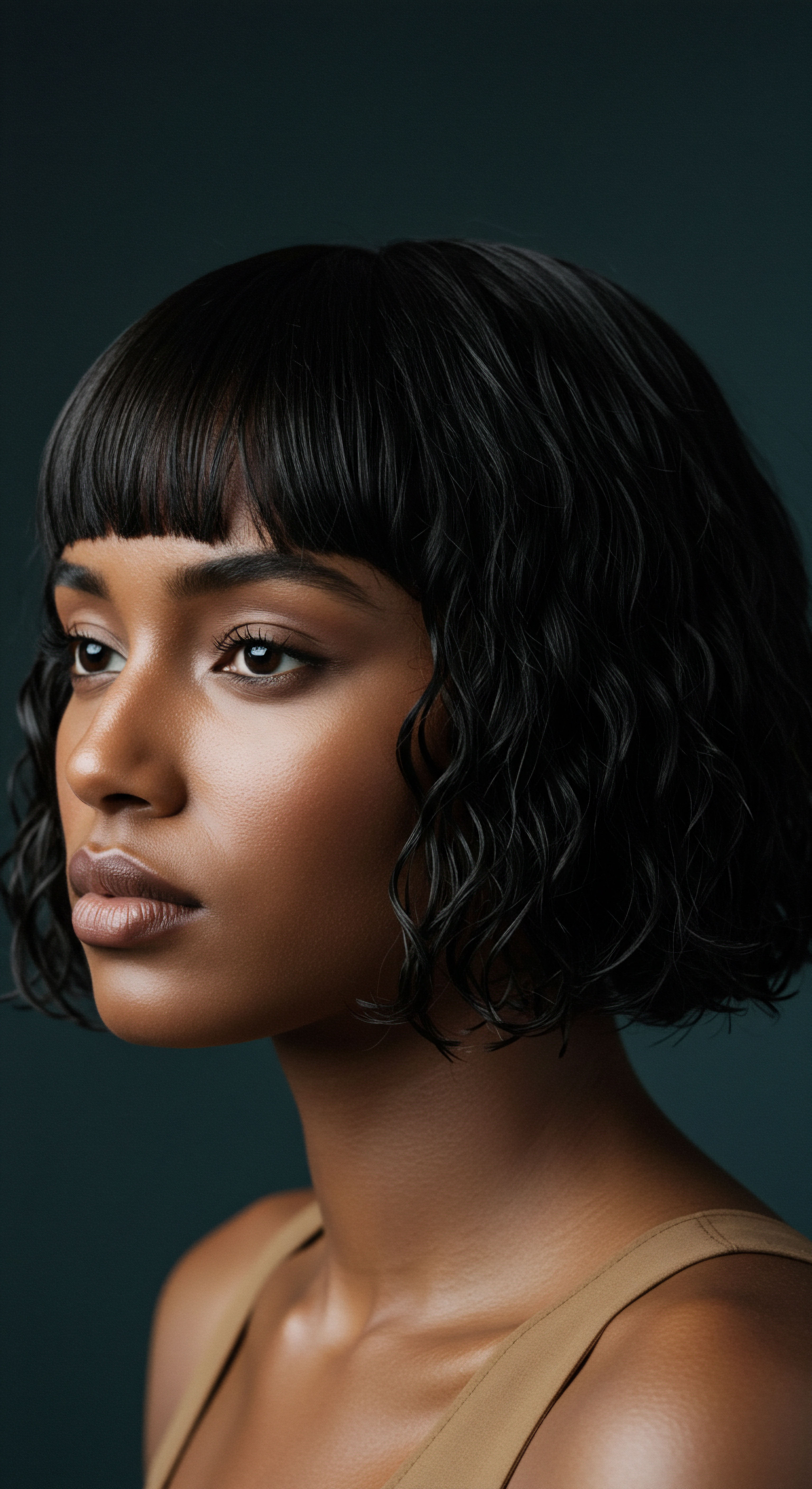
Hair Anatomy and Physiology Unique to Textured Hair
The microscopic world of textured hair reveals a marvel of biological engineering. Unlike straight hair, which typically possesses a circular cross-section, coiled and curly strands exhibit an elliptical or even flat cross-section. This distinct shape, coupled with an uneven distribution of keratin within the hair shaft, dictates the hair’s natural curl pattern. The flatter the ellipse, the tighter the curl or coil tends to be.
Furthermore, the hair follicle itself, the tiny pocket from which each strand emerges, is often curved or hooked in individuals with textured hair. This curvature causes the hair to grow in a spiral, contributing to the formation of curls and coils as it exits the scalp.
This unique follicular structure means that natural oils, or sebum, produced by the scalp, face a more challenging journey descending the coiled shaft. Consequently, textured hair often presents with a natural tendency towards dryness, a characteristic that profoundly influences care practices. The cuticle, the outermost layer of the hair, also behaves differently.
In highly textured hair, the cuticle scales tend to be more lifted, making the strands more susceptible to moisture loss and external environmental factors. This inherent structural difference underpins many of the specific care considerations and product innovations we see today.

What are the Distinct Textured Hair Classification Systems?
For generations, describing textured hair relied on broad, often inadequate terms. The emergence of classification systems has brought a more precise lexicon, allowing for a better understanding of individual hair needs. The most widely recognized system categorizes hair into types 1 through 4, with subcategories A, B, and C, denoting increasing tightness of curl or coil.
- Type 1 ❉ Straight hair, with no discernible curl pattern.
- Type 2 ❉ Wavy hair, ranging from loose S-waves (2A) to more defined waves (2C).
- Type 3 ❉ Curly hair, from loose, buoyant curls (3A) to tight, springy corkscrews (3C).
- Type 4 ❉ Coily hair, encompassing tightly packed S-patterns (4A) to Z-patterns with minimal visible curl (4C).
While these systems offer a valuable framework, they are not without their limitations. Many individuals possess multiple curl patterns on their heads, creating a complex and beautiful mosaic of textures. A deeper understanding recognizes that hair classification serves as a guide, not a rigid definition, acknowledging the spectrum of individual variations.
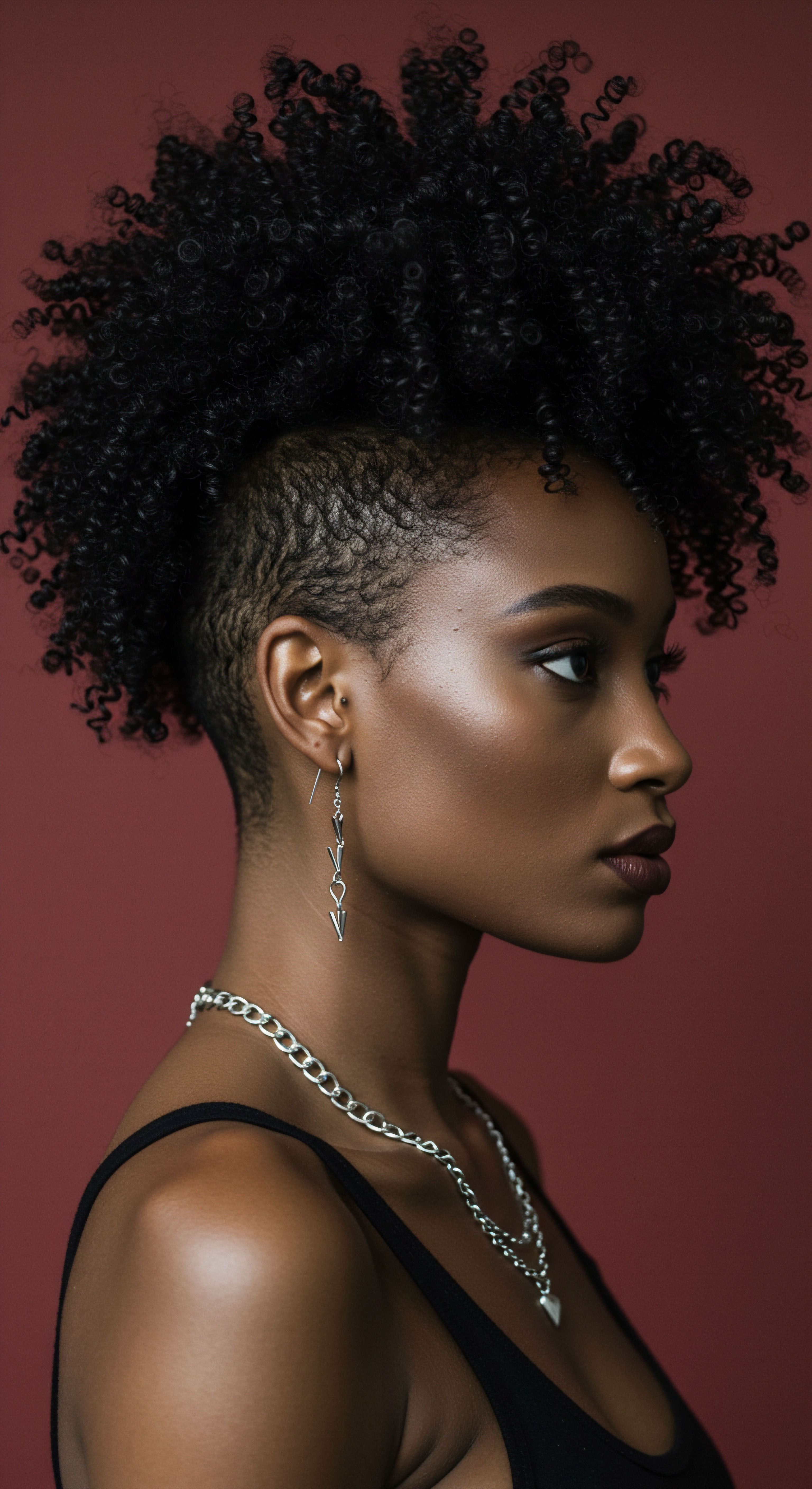
Essential Lexicon of Textured Hair
A specialized vocabulary has blossomed around textured hair care, reflecting its unique needs and traditions. Understanding these terms is foundational to navigating the modern landscape of products and practices.
| Term Porosity |
| Explanation The hair's ability to absorb and retain moisture, determined by the state of its cuticle layer. High porosity hair absorbs quickly but loses moisture rapidly. |
| Term Density |
| Explanation The number of individual hair strands on one's scalp, influencing how full the hair appears. |
| Term Elasticity |
| Explanation The hair's ability to stretch and return to its original state without breaking, indicating its health and strength. |
| Term These terms provide a basis for personalized care routines. |
Other terms like “shrinkage,” the phenomenon where coiled or curly hair appears shorter than its actual length due to its curl pattern, and “co-wash,” a method of cleansing hair with conditioner instead of shampoo, have become standard. This language reflects a collective effort to address the specific challenges and celebrate the distinct characteristics of textured hair.

Hair Growth Cycles and Influencing Factors
Hair growth follows a cyclical pattern ❉ anagen (growth), catagen (transition), and telogen (resting/shedding). For textured hair, this cycle can be particularly sensitive to external factors. The inherent dryness and structural fragility of some textured hair types can lead to increased breakage, which might be mistaken for a lack of growth.
Understanding the cycle helps in discerning true growth issues from breakage. Factors like diet, hydration, stress, and hormonal balance all play a part in hair health and growth, a truth universal to all hair types, yet often amplified in its visible impact on textured strands.
Understanding the inherent biological architecture of textured hair provides a clear foundation for its unique care requirements.

Ritual
The path to understanding and nurturing textured hair is not merely a collection of scientific facts; it is a journey into daily practices, thoughtful choices, and the quiet wisdom passed through generations. Stepping into this realm of ritual means moving beyond theoretical knowledge to the tangible actions that shape the health and vitality of coils, curls, and waves. Here, techniques and tools are explored with a gentle guidance, inviting each person to discover the rhythms that suit their unique strands.

Protective Styling Encyclopedia
Protective styles, a cornerstone of textured hair care, serve as guardians for delicate strands, shielding them from environmental aggressors and the stresses of daily manipulation. These styles tuck away hair ends, the oldest and most fragile parts of the strand, minimizing breakage and encouraging length retention.

Why are Protective Styles a Core Practice?
The efficacy of protective styles lies in their ability to reduce mechanical stress on the hair. Constant combing, brushing, and styling can lead to friction and breakage, particularly for hair with intricate curl patterns where strands are more prone to tangling and knotting. By securing the hair in styles like braids, twists, or buns, individuals can significantly reduce daily wear and tear.
This practice is not simply about aesthetics; it is a strategic approach to maintaining hair integrity and promoting its growth potential. The choices within protective styling are vast, allowing for both creative expression and practical hair preservation.
Consider the simple act of braiding ❉ whether cornrows, box braids, or flat twists, each serves to group strands, offering collective strength and protection. These styles often require minimal daily upkeep once installed, providing a respite from the routine of detangling and moisturizing. Wigs and hair extensions, when applied and maintained correctly, also offer a powerful form of protection, allowing one’s natural hair to rest and recover underneath. The decision to wear a protective style often reflects a conscious choice to prioritize hair health and longevity.

Natural Styling and Definition Techniques
Beyond protective measures, celebrating the inherent beauty of textured hair involves techniques that enhance its natural curl or coil pattern. These methods aim to define, moisturize, and allow the hair to express its authentic form.
- Wash and Go ❉ This technique involves cleansing, conditioning, and applying styling products to wet hair, then allowing it to air dry or diffuse, encouraging natural curl clumping and definition.
- Twist-Outs/Braid-Outs ❉ Hair is twisted or braided while damp, allowed to dry, and then carefully unraveled to reveal elongated, defined waves or curls.
- Bantu Knots ❉ Sections of hair are twisted and wrapped into small, coiled buns, which, when unraveled, yield highly defined, voluminous curls.
Achieving optimal definition often hinges on a delicate balance of product selection and application technique. Water, a fundamental moisturizer, plays a central role, as products are frequently applied to damp or wet hair to help seal in hydration and activate curl patterns. The journey to mastering natural styling is often one of experimentation, learning what works best for one’s specific texture and lifestyle.
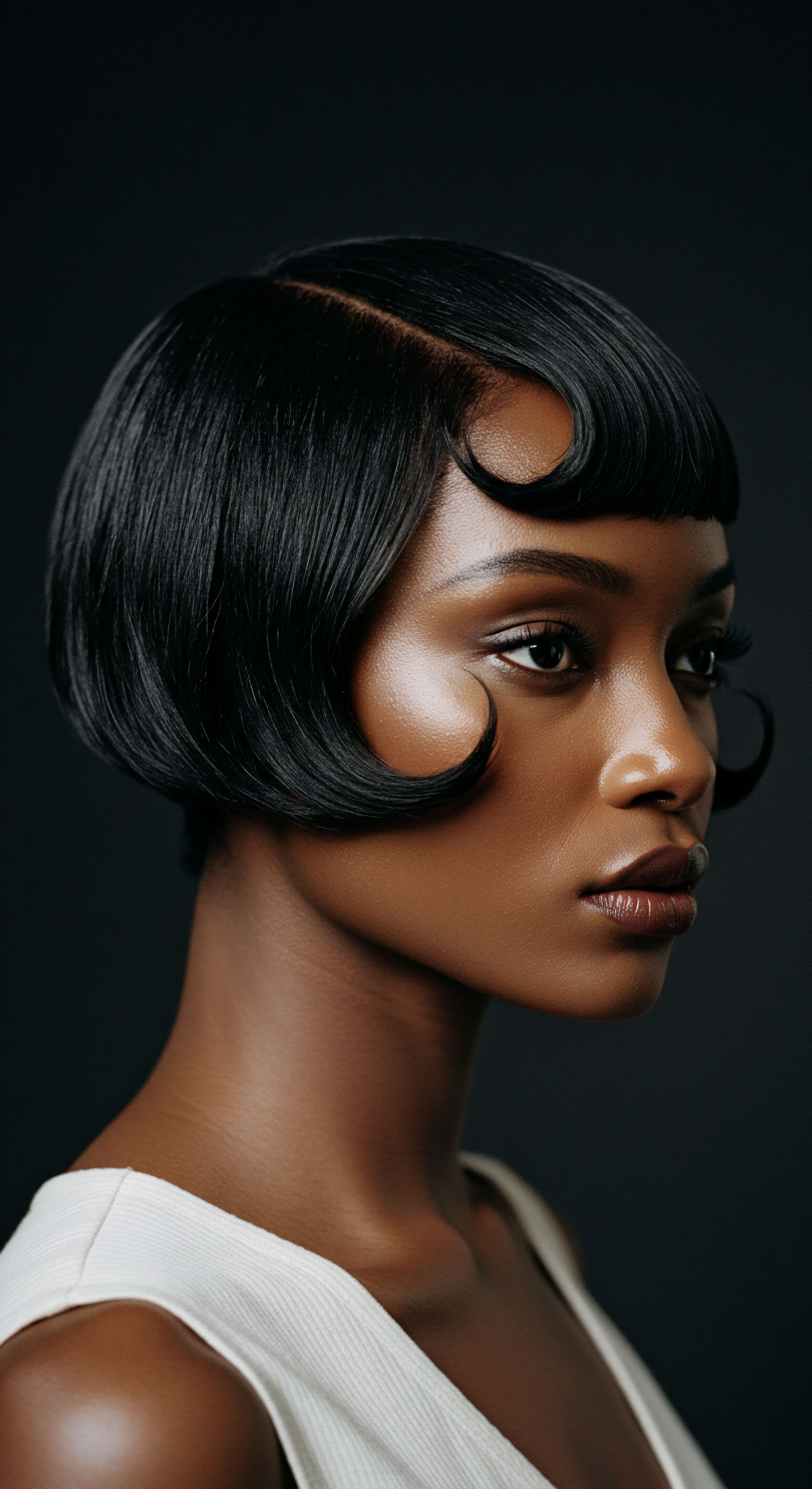
Wigs and Hair Extensions Mastery
Wigs and extensions hold a significant place in the world of textured hair, offering versatility, protection, and a means of personal expression. Their application, care, and integration with natural hair require specific knowledge to ensure both the longevity of the added hair and the health of the wearer’s own strands.
The selection of human hair versus synthetic, the method of attachment (sew-ins, clip-ins, tape-ins), and the proper cleansing and conditioning routines all contribute to a successful experience. A well-installed wig or set of extensions can minimize tension on the scalp and natural hair, while poor practices can lead to traction alopecia or breakage. This mastery involves not just the aesthetic application, but a deep understanding of scalp health and the underlying hair’s needs.

Heat Styling and Thermal Reconditioning with a Safety-First Approach
While embracing natural texture is paramount, heat styling offers another avenue for versatility. However, the unique structure of textured hair, with its more lifted cuticles, renders it particularly susceptible to heat damage. A safety-first approach is not merely advisable; it is essential.
This involves using heat protectants as a barrier against thermal stress, opting for lower heat settings, and limiting the frequency of heat application. Tools designed with ceramic or tourmaline plates distribute heat more evenly, reducing hot spots that can cause irreversible damage. Thermal reconditioning, a more permanent chemical and heat-based straightening process, carries higher risks and necessitates professional application and rigorous aftercare to maintain hair health. The pursuit of sleek styles must always be balanced with a commitment to preserving the hair’s inherent strength.

The Complete Textured Hair Toolkit
The right tools are extensions of mindful care. For textured hair, this toolkit differs significantly from those used for straight hair.
- Wide-Tooth Comb ❉ Essential for detangling wet or damp hair, minimizing breakage.
- Spray Bottle ❉ For re-wetting hair during styling or for refreshing curls between washes.
- Microfiber Towel or Old T-Shirt ❉ Gentler than traditional terrycloth towels, reducing frizz and preserving moisture.
- Satin or Silk Scarf/Bonnet ❉ Protects hair at night, preventing friction and moisture loss against absorbent cotton pillowcases.
- Hair Clips/Sectioning Clips ❉ Aid in organizing hair for easier styling and product application.
The careful selection and use of these tools significantly impact the health and appearance of textured hair, transforming routine care into a nurturing ritual.
Daily practices and mindful choices, supported by appropriate tools, form the ritual of care that sustains textured hair.

Relay
The journey of textured hair care extends beyond individual practices, reaching into the very fabric of societal norms and cultural expectations. This deeper exploration invites us to consider how deeply ingrained perceptions, often unconscious, shape not only our routines but also our self-perception and opportunities. Here, we delve into the complex interplay of biological realities, psychological impacts, and the broader social landscape that influences how textured hair is perceived and cared for in the modern world.

How do Cultural Perceptions of Textured Hair Influence Modern Care?
The question of how cultural perceptions influence modern care is multifaceted, extending far beyond product aisles and styling techniques. Historically, dominant beauty standards have often privileged straight hair, subtly (and sometimes overtly) devaluing textured hair. This societal preference has had profound implications for how individuals with textured hair approach their care routines, sometimes leading to practices aimed at conformity rather than health.
Consider the phenomenon of hair discrimination, a stark manifestation of these perceptions. A 2023 study co-commissioned by Dove and LinkedIn revealed that Black women’s hair is 2.5 times more likely to be perceived as unprofessional. This perception is not benign; it has tangible consequences. The same study indicated that approximately two-thirds (66%) of Black women alter their hair for job interviews, with 41% straightening their curls.
This statistic speaks volumes about the pressure to align with Eurocentric beauty ideals in professional settings. The choices made in a hair care routine, from the products selected to the styles adopted, are therefore not solely personal preferences; they are often responses to external pressures and deeply embedded cultural biases. This can lead to a reliance on heat styling or chemical relaxers, even when such methods compromise hair health, simply to meet perceived standards of acceptability or professionalism.

Building Personalized Textured Hair Regimens
Moving towards a care approach rooted in health requires dismantling these external influences and building regimens tailored to the hair’s inherent needs. A personalized regimen acknowledges the unique porosity, density, and elasticity of individual strands, rather than attempting to force hair into an unnatural state.

Why is a Tailored Regimen Essential for Textured Hair?
A universal approach to hair care often fails textured hair due to its specific structural and moisture requirements. A regimen for low porosity hair, for instance, might prioritize lightweight products that do not build up, while high porosity hair benefits from heavier butters and creams to seal in moisture. Understanding these distinctions allows for product selection that truly nourishes.
This customization is a direct counter to historical trends that pushed a “one-size-fits-all” model, often designed for straight hair, onto all consumers. The modern shift celebrates individual hair types and advocates for routines that support their natural tendencies, leading to healthier, more resilient hair.
A tailored regimen typically involves:
- Cleansing ❉ Using sulfate-free shampoos or co-washes to clean without stripping natural oils.
- Conditioning ❉ Deep conditioning regularly to restore moisture and strengthen strands.
- Moisturizing and Sealing ❉ Applying leave-in conditioners, oils, or creams to lock in hydration.
- Styling ❉ Choosing styles that minimize manipulation and protect the hair.
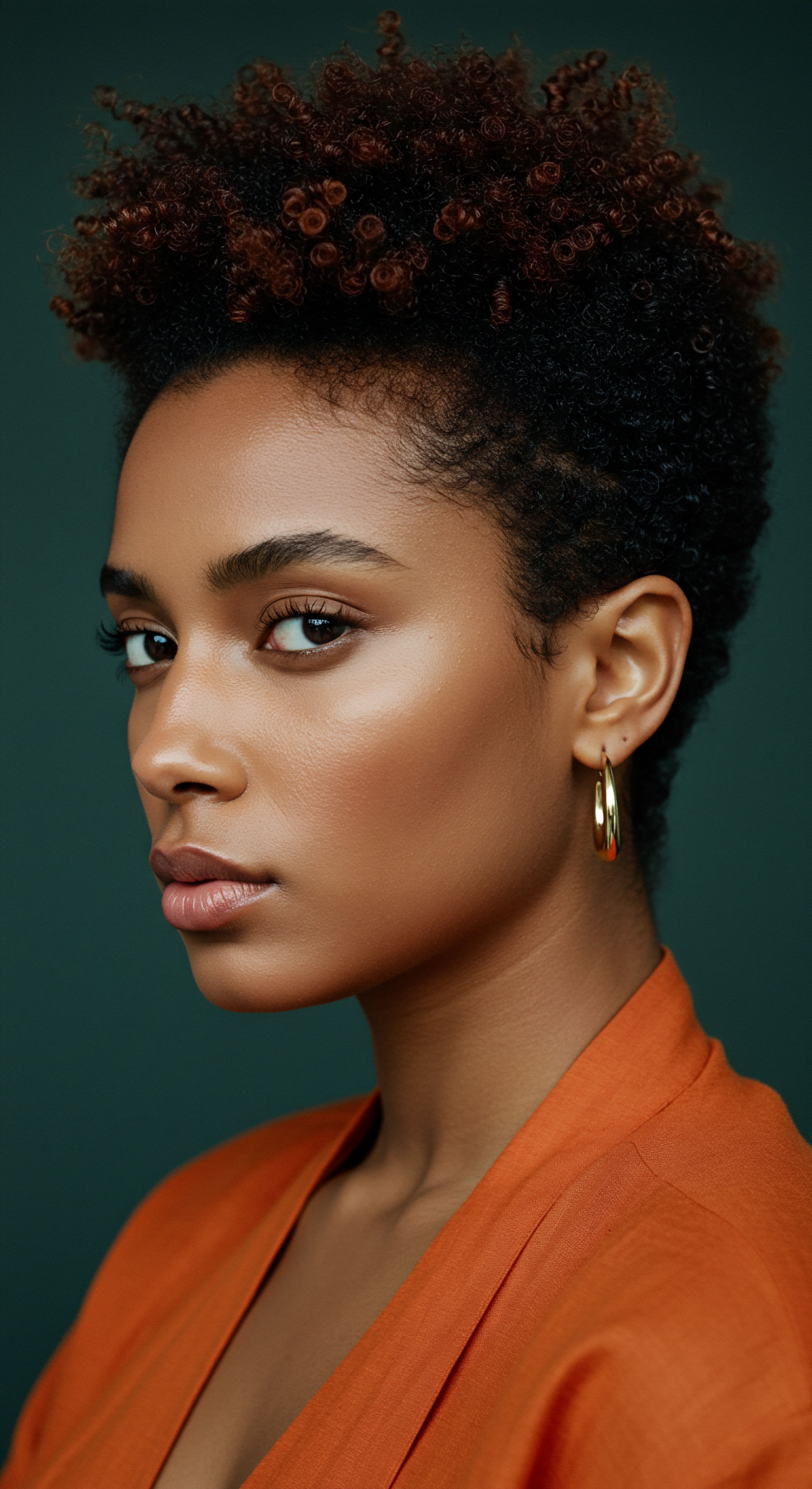
The Nighttime Sanctuary Essential Sleep Protection and Bonnet Wisdom
The care for textured hair extends into the hours of sleep, a period often overlooked but critically important for hair preservation. Nighttime protection, particularly through the use of satin or silk accessories, serves as a quiet revolution in maintaining hair health.
Cotton pillowcases, while comfortable, are highly absorbent and create friction. This friction can strip moisture from hair strands, leading to dryness, frizz, and breakage, especially for delicate textured hair. Satin or silk bonnets, scarves, and pillowcases provide a smooth, low-friction surface that allows hair to glide freely, preserving moisture and minimizing tangles.
This simple ritual, deeply ingrained in many textured hair care traditions, underscores a proactive approach to hair health that recognizes the constant need for gentle handling and moisture retention. It is a testament to the wisdom that small, consistent actions yield profound benefits.

Ingredient Deep Dives for Textured Hair Needs
The ingredients within hair care products hold the power to either support or hinder the health of textured hair. A discerning eye for formulations is a vital component of modern care.
Certain ingredients are particularly beneficial for textured hair, addressing its inherent dryness and fragility. These include:
- Humectants ❉ Such as glycerin and hyaluronic acid, which draw moisture from the air into the hair.
- Emollients ❉ Like shea butter, coconut oil, and jojoba oil, which soften and smooth the hair cuticle.
- Proteins ❉ Hydrolyzed wheat protein or silk protein, which can strengthen hair strands and reduce breakage.
Conversely, certain ingredients, like harsh sulfates and silicones (that are not water-soluble), can be detrimental, leading to dryness and product buildup. The conscious selection of products with beneficial ingredients reflects a deeper understanding of hair science and a commitment to nurturing textured hair with intention.
Cultural perceptions, deeply influencing choices from styling to product selection, underscore the need for care routines that prioritize textured hair health above external conformity.

Textured Hair Problem Solving Compendium
Even with the most diligent care, textured hair can present specific challenges. Addressing these concerns requires a blend of scientific understanding and practical solutions.
| Concern Dryness |
| Underlying Factor Curved follicle, lifted cuticles, insufficient moisture retention. |
| Care Approach Consistent deep conditioning, leave-in moisturizers, sealing with oils/butters. |
| Concern Breakage |
| Underlying Factor Friction, chemical damage, lack of elasticity, inadequate moisture. |
| Care Approach Gentle detangling, protective styles, protein treatments (balanced), minimizing heat. |
| Concern Tangles |
| Underlying Factor Curl patterns interlinking, dryness, improper detangling. |
| Care Approach Finger detangling, wide-tooth combs, ample conditioner during wash day. |
| Concern Understanding the root cause is key to effective problem resolution. |
Solutions often involve adjusting one’s regimen, identifying specific triggers, and adopting targeted treatments. This problem-solving mindset transforms challenges into opportunities for deeper learning about one’s hair.

Holistic Influences on Hair Health
Hair health is an outward manifestation of internal wellbeing. Beyond topical products, holistic factors significantly influence the vitality of textured hair.
Diet plays a pivotal part, with adequate protein, vitamins (especially A, C, D, E, and biotin), and minerals (iron, zinc) providing the building blocks for strong hair. Hydration, through sufficient water intake, directly impacts the hair’s ability to retain moisture. Stress management techniques, quality sleep, and regular physical activity also contribute to overall health, which in turn reflects in the hair’s condition.
The mind-body connection is particularly relevant; internal peace often aligns with external radiance. Approaching textured hair care holistically acknowledges its connection to the entire person, advocating for practices that nourish from within.
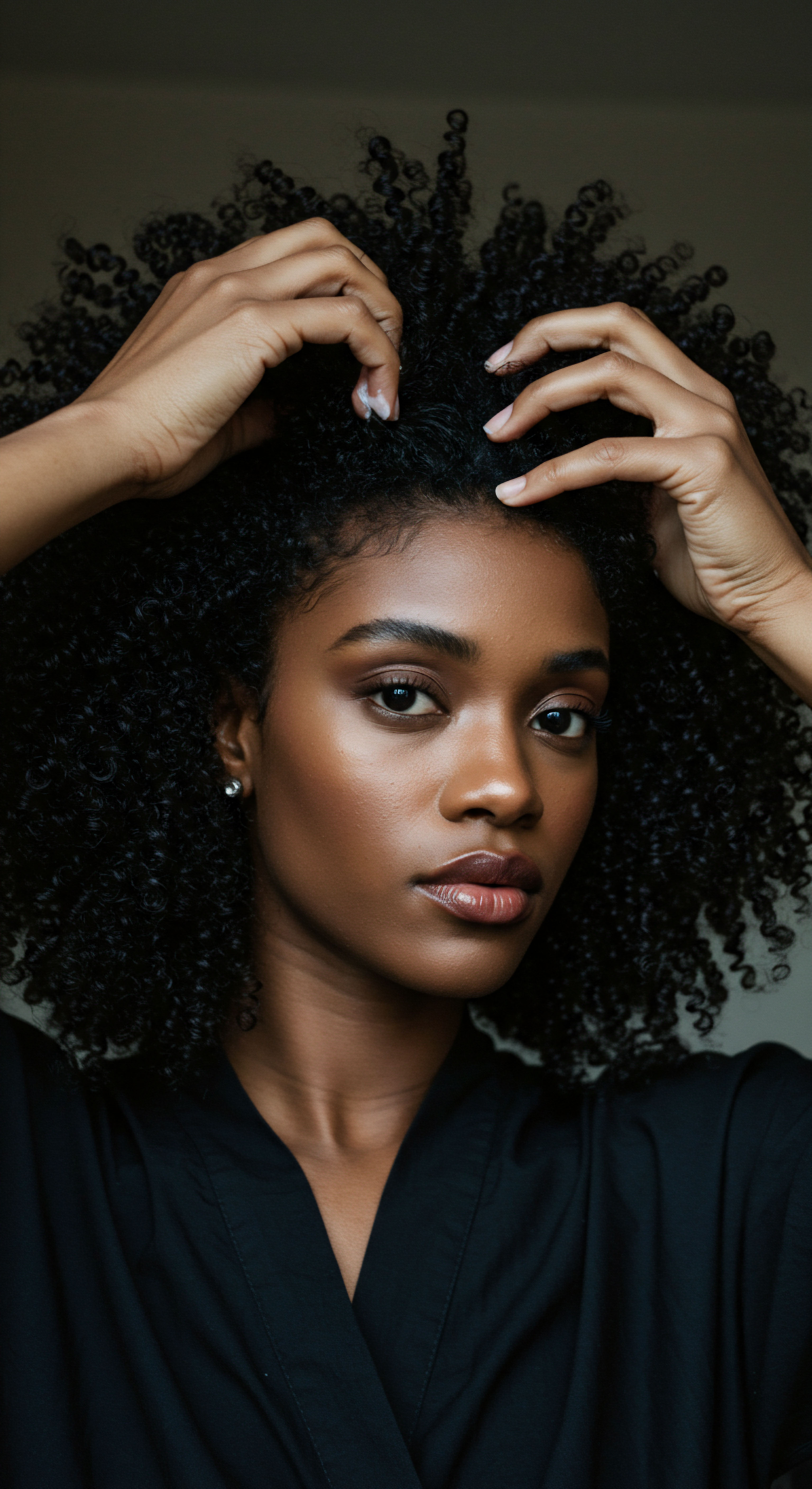
Reflection
The story of textured hair, from its delicate cellular structure to its vibrant cultural expressions, continues to unfold. We have witnessed how ancestral knowledge converges with scientific discovery, how personal journeys intertwine with broader societal narratives. The perceptions held by communities, by institutions, and by individuals themselves, undeniably shape the routines, the products, and the very spirit with which textured hair is approached. As we move forward, a gentle understanding and a steadfast celebration of every coil, curl, and wave will illuminate a path where hair care transcends mere maintenance, becoming a profound act of self-acceptance and cultural affirmation.

References
- Koval, C. Z. & Rosette, A. S. (2020). The Natural Hair Bias in Job Recruitment. Social Psychological and Personality Science.
- Dove and LinkedIn. (2023). The CROWN 2023 Workplace Research Study.
- Sow, Y. N. Onalaja-Underwood, A. A. Jackson, T. K. Taylor, S. C. & Ogunleye, T. A. (2023). Minority hair tax ❉ pricing bias in haircare products. International Journal of Women’s Dermatology.
- Perception Institute. (2017). The “Good Hair” Study ❉ Explicit and Implicit Attitudes Toward Black Women’s Hair.
- Banks, I. (2000). Hair Matters ❉ Beauty, Power, and the Politics of Hair in African American Culture. New York University Press.
- Collins, P. H. (2002). Black Feminist Thought ❉ Knowledge, Consciousness, and the Politics of Empowerment. Routledge.
- Gould, E. & deCourcy, L. (2023). Black women’s median hourly wage was 69.5% that of white men in 2022. Economic Policy Institute.
- Evelyn, M. (2020). Deandre Arnold and the Politics of Black Hair. Teen Vogue.
- Locke, K. (2022). 9-year-old Ava Russell sent home from school for wearing natural curls. Fox 2 Detroit.
- Montle, N. (2020). The Politics of Black Hair. Southern African Journal of Policy and Development.